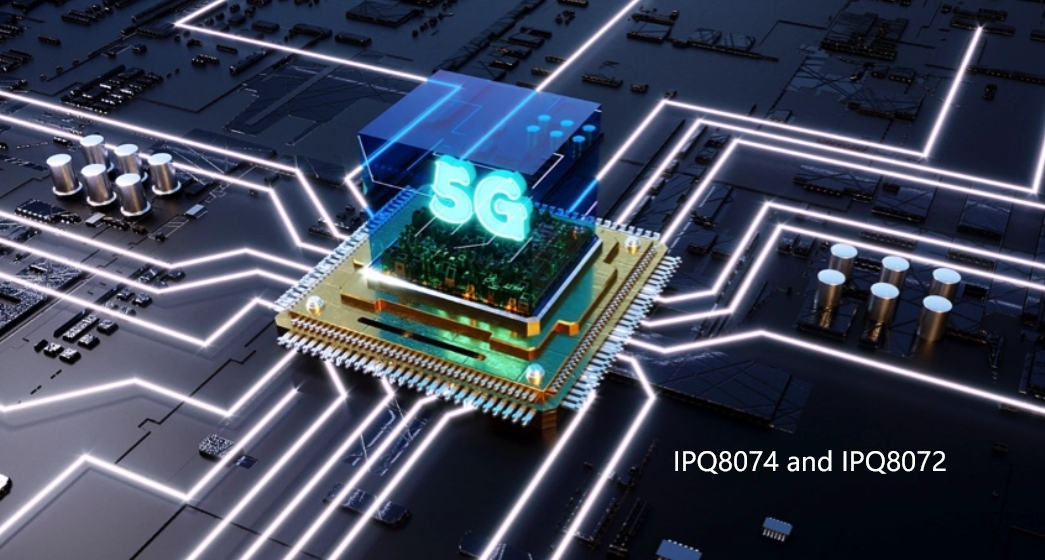WiFi solution IPQ8072-IPQ8074 and network cards-5G: What performance debate in 5G era?
Today, in the 5G era, wireless network connectivity has become more critical, and WiFi technology as a major wireless connection mode, its hardware components are constantly evolving. This article will delve into the significant differences between Radio on the WiFi motherboard and Radio on the network card in terms of 5G, performance, and more.
In the 5G era, the Radio of the two WiFi motherboards, IPQ8074 and IPQ8072, has become the focus of attention. As high-performance WiFi hardware, they all have their unique characteristics, and below we will in-depth compare their similarities and differences in 5G support and performance.

1. 5G support
Radio on WiFi motherboards: In most cases, Radio on WiFi motherboards does not directly support 5G connections. This is because the Radio on the motherboard is usually designed to provide basic WiFi connectivity, and its frequency bands may be mainly concentrated in 2.4GHz and 5GHz. This design is suitable for general home and office scenarios, but there are performance bottlenecks in the 5G environment, which requires higher data transmission speeds and capacity.
Radio on network cards: In order to adapt to the high-speed transmission needs of the 5G era, Radio on many modern network cards has begun to support higher frequency bands, including bands that support 5GHz and even higher frequencies. This allows users to get a more reliable connection in a more congested network environment and enjoy faster data transfer speeds.
2. Performance performance
Radio on the WiFi motherboard: Since the Radio on the WiFi motherboard is embedded in the device motherboard, its performance is usually limited by the hardware of the entire system. This can lead to the potential of high-speed transmission not being fully realized in a 5G environment, limiting overall performance.
Radio on the network card: The Radio on the network card is usually an upgradeable component, so users have the opportunity to choose a more powerful network card to adapt to the faster 5G network. This substitutability gives users greater flexibility to choose the appropriate hardware according to their needs for better performance.
3. Spectrum utilization and congestion
Radio on the WiFi motherboard: Radio on the motherboard is usually configured inside the device, and its spectrum utilization is affected by the internal interference of the device and the surrounding environment. In a crowded WiFi network, you may encounter problems with signal interference and unstable connections.
Radio on the network card: The external location of the network card allows it to better capture a clear signal and reduce interference with other devices. This helps improve spectrum utilization and provides a more stable connection in high-density network environments.
Step 4 Summarize
In the 5G era, choosing the right WiFi hardware is crucial. There are obvious differences between Radio on a WiFi motherboard and Radio on a network card, especially when it comes to 5G support and performance. For users seeking higher speeds and more reliable connections, choosing a Radio on a network card that supports 5G bands and is upgradeable may be a wiser choice. As technology continues to evolve, we can expect wireless connectivity to continue to usher in new breakthroughs in the evolution of the future.
The IPQ8074 and IPQ8072 represent two different orientations in WiFi motherboards, emphasizing the balance between high performance and versatility, respectively. For users who emphasize high-speed transmission and large capacity, the IPQ8074 may be more appropriate, while for broader network needs, the IPQ8072 may be a wiser choice. In the 5G era, we see continuous innovation in WiFi hardware, with different designs and features to meet the needs of different user groups and provide users with more choices.
Wallys software technology advantages:
Wallys has 10 years of experience in software development and is very experienced in uboot, Linux, wifi protocol, wifi performance, OS and other systems. It mainly uses Qualcomm chips to develop important software such as drivers and kernels, and has the ability to modify and compile to meet customers' different wifi functional requirements. Meanwhile, it participates in openwrt organization and code development. wifi5 product DR40x9 has been officially supported by openwrt.
Hardware technology advantages:
We have a strong hardware design team, and experienced people know that the most difficult part of hardware design is RF circuit design, baseband, etc., while wallys team made 0 error to achieve signal integrity, such as frequency conversion of network card, from 2.4G to 900M, which is a technological breakthrough.
Clients: TIP,Facebook, Openwrt, etc
Email:sales@wallystech.com
WEB:https://www.wallystech.com/
*博客内容为网友个人发布,仅代表博主个人观点,如有侵权请联系工作人员删除。
1721030087 阅读:12150